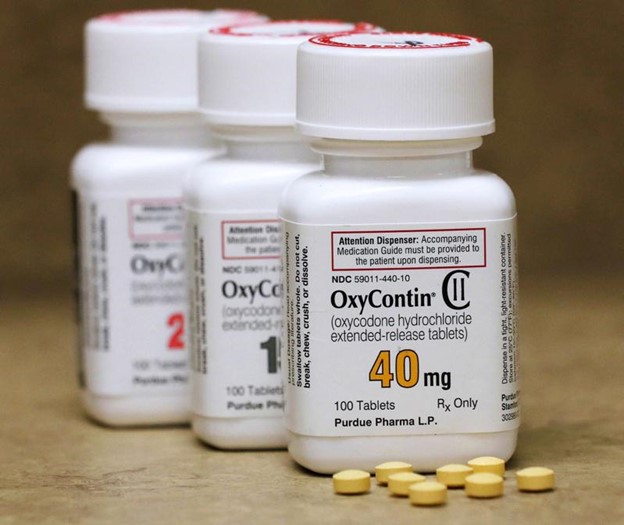
Revision of Painkiller Guidelines Urges Physicians to 'Judgment the Dose' to Avoid Drug Addiction
(We Chinese in America Media Editor Tang Zhao, February 11, 2022) The CDC has updated its guidelines for the use of pain relievers, including opioids, to carefully dose and encourage physicians to use their best judgment. Pictured are painkillers sold at a pharmacy in Utah. (Reuters)
The Federal Centers for Disease Control and Prevention (CDC) on the 10th proposed a "New Pain Relief Guide" that includes opioid pain relievers, calling on doctors to carefully consider the dosage so as not to cause drug addiction, and recommending that doctors first consider "non-opiate therapy", including other prescriptions and over-the-counter medicines, as well as physical therapy, massage, acupuncture, and more.
This is the first major revision of the CDC's long-term and emergency pain relief guidelines since 2016. 12 of them recommend that important doctors strike a balance between "pain relief" and "long-term health", and not let patients fall into opioids. adverse side effects.
The 229-page revised draft warns that over-reliance on opioid painkillers can have dangerous side effects such as addiction, respiratory depression and altered mental status, and even to relieve acute pain such as burns and shattered bones, it is best to start them first. Use low-dose, short-term medication for pain relief to avoid long-term drug addiction.
The draft revision has been published on the Federal Register website, and the public can provide comments within 60 days. The government will announce the final version at the end of this year; even if it is finalized, it is not a "mandatory requirement."
The subjects discussed in this case do not include patients with cancer, sickle cell diseases such as thalassemia and terminally ill, end-of-life pain relief.
The 2016 Medication Guidelines led many patients to overdose on painkillers (more than the daily equivalent of 90 milligrams of morphine), many patients were angry and fearful, and hundreds of pain relief professionals protested.
Although the maximum dose is only a recommendation, dozens of states have legalized it, and many physicians, fearing criminal and civil penalties, mistook the guidelines as "hard rules", and suddenly gave pain relief to patients with chronic pain, or even refused to admit patients with pain.
Christopher Jones, acting director of the CDC's National Center for Injury Prevention and Control, one of the drafters, said the new guidelines de-emphasize "one-size-fits-all" pain relief doses, giving doctors more flexibility to target individual patients. Patients have proposed different pain relievers.
However, scientific studies have found that opioids have limited long-term effects, and the new guidelines emphasize that doctors should always evaluate the pros and cons of opioids.
The new guideline also summarizes the latest research and recommends “multiple, symptomatic” pain relief. For example, exercise, acupuncture, or other medicines are also effective for lower back, knee and neck pain, opioids should not be used for migraine headaches, and knee arthritis may consider heat treatment. Therapy (moxibustion), weight loss, neck pain can be treated with yoga, tai chi, qigong, massage, acupuncture, and other methods.
(Source: Compiled from Online Information)










